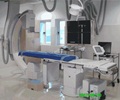The racial make up of the neighborhood influences the chances of CPR after a cardiac arrest.

‘A lack of education about cardiac arrest and CPR in general is linked to among people living in black neighborhoods, along with a dearth of defibrillators in public spaces.’





"We have known that there are differences in the rates of survival from cardiac arrest between blacks and whites, but it was surprising to see how the demographics of a neighborhood affected outcomes of residents who experience cardiac arrest," said lead author Monique Starks, M.D., a cardiologist and member of the Duke Clinical Research Institute. "This is absolutely a call to action to improve and expand CPR training and defibrillator access."
Starks and colleagues -- including senior author Graham Nichol, M.D., director of the University of Washington-Harborview Center for Prehospital Emergency Care -- analyzed cardiac arrest data from a registry that includes information from seven U.S. cities: Birmingham, Dallas-Fort Worth, Pittsburgh, Portland, Seattle, and Milwaukee. U.S. Census data were used to provide demographic information at the neighborhood level.
The researchers analyzed more than 22,000 cases in which cardiac arrest occurred in a non-hospital setting over a four-year period between 2008-11. Neighborhoods where out-of-hospital cardiac arrests occurred were classified by census tract, based on percentage of black residents, ranging from fewer than 25 percent, between 25-50 percent, between 51-75 percent, and more than 75 percent.
Compared with patients who experienced a cardiac arrest in mainly white neighborhoods, those in predominantly black neighborhoods were slightly younger, more frequently female, had lower rates of initial shockable rhythm, and less frequently experienced their heart event in a public location.
Advertisement
Use of an automated external defibrillator was similarly disproportionate by racial composition of the neighborhood. In mostly white neighborhoods, 4.5 percent of cardiac arrest victims received defibrillation from a bystander, compared to 0.9 percent in black neighborhoods.
Advertisement
"We clearly see that treatments and outcomes for patients with cardiac arrest in black neighborhoods are worse than those in white neighborhoods. We then asked does it matter if you were black or white within those neighborhoods?" Nichol said.
"Our observations were reassuring. It actually does not matter if you are black or white within the neighborhood, but the neighborhood matters."
That finding, the researchers noted, points to a lack of education about cardiac arrest and CPR in general among people living in black neighborhoods, along with a dearth of defibrillators in public spaces.
"This is something that can be addressed," Starks said.
"Organizations such as the American Heart Association and the American Red Cross, along with medical centers and public health departments, have a unique opportunity to address this issue with dedicated education programs that are particularly tailored for black neighborhood. This is a relatively low-cost solution that could save lives."
Source-Eurekalert















